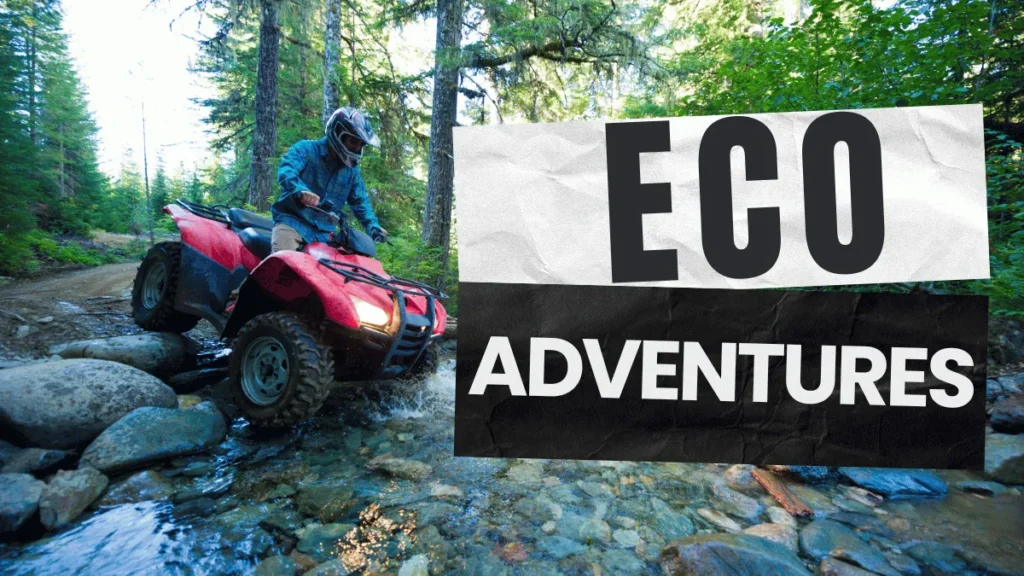
Traveling into nature’s wild spaces is exhilarating—but it can strain fragile ecosystems. By adopting sustainable practices, you can enjoy unforgettable eco-adventures while preserving the environment for future generations. Follow this SEO-optimized guide to plan and execute your most eco-friendly outdoor trip yet.
Plan with Purpose
Before you lace up your hiking boots or paddle your canoe, start with research:
- Choose eco-certified operators: Look for tour companies certified by organizations like Rainforest Alliance or Green Globe.
- Opt for local guides: Hiring guides from nearby communities reduces travel carbon and supports local economies.
- Travel off-peak: Visiting outside busy seasons lessens pressure on trails, campsites, and wildlife habitats.
Tip: Check national park websites for sustainable tourism initiatives and permit systems that limit visitor numbers.
Pack Light, Pack Right
Every extra kilo increases fuel consumption and trail erosion. Pack essentials that are eco-certified and multi-purpose:
- Reusable gear: Stainless steel water bottles, collapsible food containers, and bamboo utensils.
- Eco-friendly toiletries: Biodegradable soap, shampoo bars, and reef-safe sunscreen.
- Sustainable fabrics: Merino wool or recycled polyester layers are durable, quick-dry, and reduce waste.
- Minimal packaging: Repackage snacks into reusable zip packs; avoid single-use plastics.
Choose Low-Impact Transportation
Getting there sustainably is as important as the journey itself:
- Public transit & rideshares: Trains and buses cut carbon per passenger significantly vs. solo driving.
- Cycling or e-bikes: Short-distance travel inside parks or between trailheads reduces emissions and noise.
- Car-sharing: If you must drive, travel with a group to share fuel costs and emissions.
Internal Link Suggestion: Link to your site’s “Top 10 Electric Vehicles for Outdoor Enthusiasts” for more on low-emission travel.
Also Check: Tiderace Sea Kayaks Coming to Australia
Practice Leave No Trace Principles
These seven principles are the gold standard in outdoor ethics:
- Plan Ahead & Prepare – Avoid unmarked or sensitive areas.
- Travel & Camp on Durable Surfaces – Stick to established trails and campsites.
- Dispose of Waste Properly – Pack out all trash, including biodegradable scraps.
- Leave What You Find – Don’t pick plants or disturb cultural artifacts.
- Minimize Campfire Impact – Use a camp stove or established fire rings.
- Respect Wildlife – Observe from a distance; never feed animals.
- Be Considerate of Other Visitors – Keep noise low and yield trails.
Support Conservation & Local Communities
Your trip can directly benefit the regions you visit:
- Donate to park foundations: Many national parks accept small contributions for trail maintenance.
- Shop local: Purchase souvenirs, food, and gear from community-owned businesses.
- Volunteer: Join trail clean-ups or citizen science projects to give back during your visit.
Embrace Renewable Energy in the Field
Power your adventure sustainably:
- Solar chargers: Lightweight panels can recharge phones, GPS, and headlamps.
- Hand-crank devices: Backup power for emergency radios or flashlights.
- Portable wind turbines: For longer stays, micro-wind generators provide off-grid electricity.
Measure & Offset Your Footprint
- Calculate your carbon: Use tools like Carbon Footprint Calculator to estimate trip emissions.
- Purchase offsets: Support reforestation or renewable energy projects to neutralize your travel impact.
- Track progress: Keep a journal of sustainable choices to improve future trips.
Final Thoughts
Eco-adventures don’t require sacrificing comfort or excitement—in fact, traveling responsibly often deepens your connection to nature and local cultures. By planning thoughtfully, minimizing waste, and supporting conservation efforts, you’ll help ensure the great outdoors remains pristine and vibrant for years to come.
